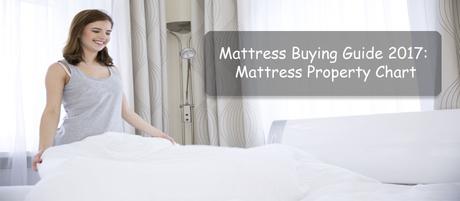
The following chart indicates the relative suitability of each mattress type for the property indicated. A score of 1.
Indicates that this type of mattress is preferred, and so on to a score of 3 for least referred. That does not mean that a 3 score indicates that the mattress type is unsuitable, only that it is least suitable in comparison with the other types of mattress in this list.
Hybrid mattresses, that combine two or more of the types below, might also be a relevant choice, although they would be a compromise between the types available.
* Water mattresses/waterbeds may run cool, but they are generally too cold and often require a heater to attain a comfortable temperature.
Notes:
- While the above information applies generally, it is also important to take the density and hardness of the mattress into consideration. A back sleeper will require a firmer memory foam than a stomach sleeper due to the relative hardness of the body parts in most contact with the mattress.
- Air beds vary in their hardness according to the extent of inflation. The best air mattresses for couples are those with two inflatable cells that can be inflated to their own preferred level. This will then change the score for 'separation' .
- It should be noted that the above figures are averages, and that some brands may be better than others for a specific property.
Definition of terms:
- Firmness and Support: Firmness and support are not the same. Firmness is the initial hardness of the mattress when you first lie down, while support refers to how well the mattress supports your body - such as keeping your spine properly aligned or properly supporting your hip joint to reduce pain.
- Pain Relief: Fundamentally the same as support. If you have arthritis or painful joints that need support without being too hard, or problems with your discs in your back, then a mattress that offers support and comfort will be better for you than a harder mattress.
- Coolness: if you find that your mattress heats you up, such as a standard polyurethane memory foam mattress can do, then you might prefer to use a gel memory foam that absorbs your body heat.
- Allergies/Dusts: some mattresses can collect dust and become breeding grounds for dust mites to which many people are allergic. Open constructions, such as innerspring mattresses, are more likely to suffer from this problem than a foam mattress.
- Separation: Many people can have their sleep disturbed by the movement of their partner during the night. A mattress such as memory foam minimizes this problem.
- Bounce: Younger couples like a good bounce to their mattress to make sex easier. This is, after all, the second largest use to which a mattress is put. Memory foam mattresses are not so good for this purpose since pressure and heat makes you sink into them.
- Sleeping Habits: The way you sleep (back, front or side) makes a difference to which type of mattress is best for you.
- Longevity: Some types of mattress last longer than others. Foam mattresses tend to have a longer useful life than others.
Most of the above terms are covered in more detail in the main part of this mattress buying guide. You should take the above information into account when deciding how to choose the best mattress for your personal needs. The upshot is that if you need support on various prominent joints - hips, shoulders, knees and your spine - then a memory foam mattress is likely your best choice. A gel memory foam is best if you tend to get hot when sleeping on a regular memory foam mattress.
My advice on sleeping habits - back, side or stomach - is based upon medical advice and studies on the relative benefits of the various types of mattress available. Check out this video from an orthopedic surgeon on the best mattress for a bad back.
Mattress Buying Guide 2020: Conclusion
This chart gives you a guide as the type of mattress best suited to your needs. However, keep in mind that in addition to whether you choose a memory foam, innerspring or water mattress, the firmness and support offered by each mattress is just as important as the mattress construction.
If you have problems with your back or spine, then you may need a mattress that is fairly firm, but also supports your back in a way that maintains the natural curvature of your spine. That indicates a memory foam or air mattress - although foam is generally preferred. Go for a higher-density (5 lb+) memory foam mattress that provides the optimum level of spinal alignment. Anything lower in density offers less contouring of the foam to your body shape.
If you want more information on how to choose the best mattress for the way you sleep, then check out this video from the USA Consumer Reports site.
Continue Reading: How to Choose a Mattress: Mattress Buying Guide "

